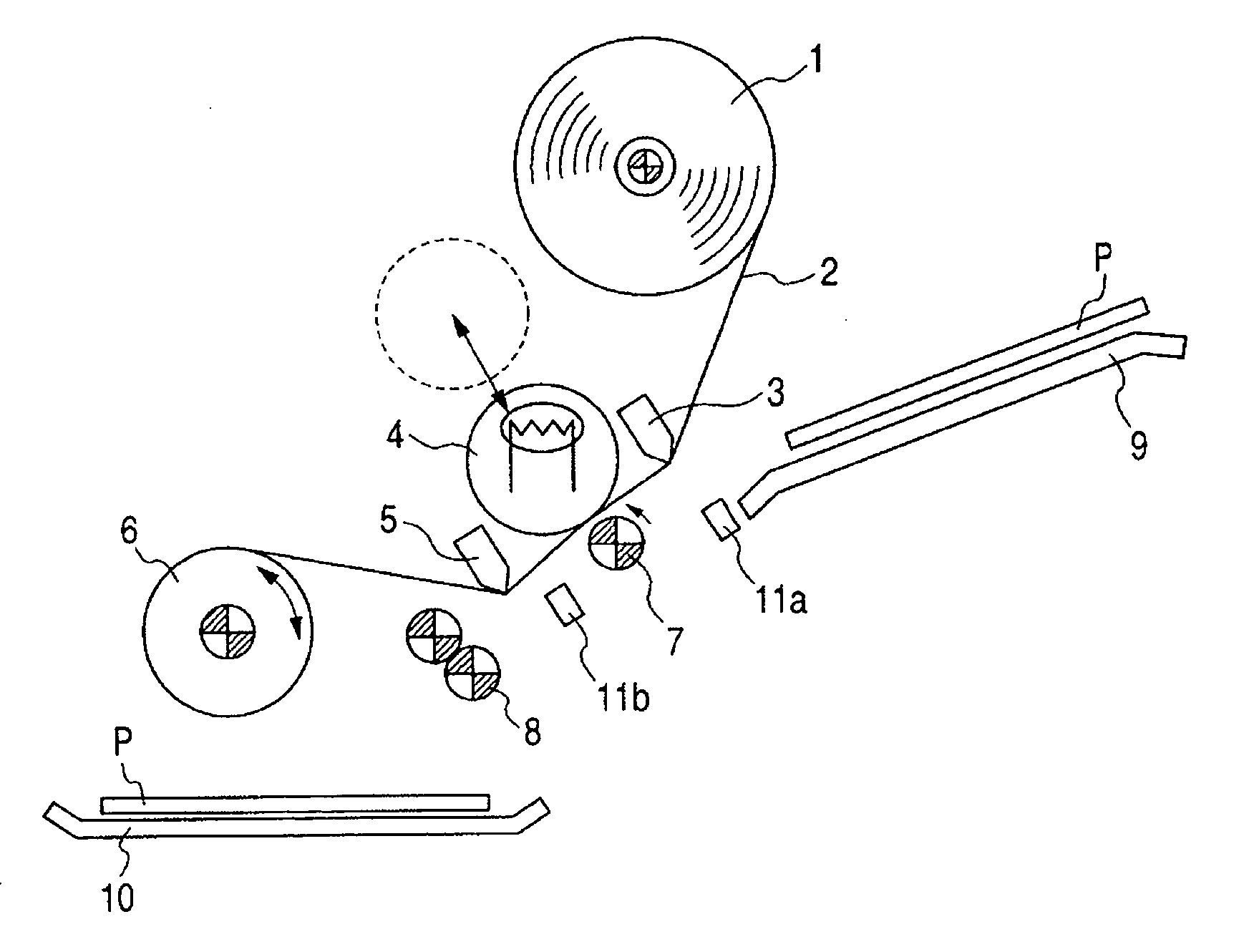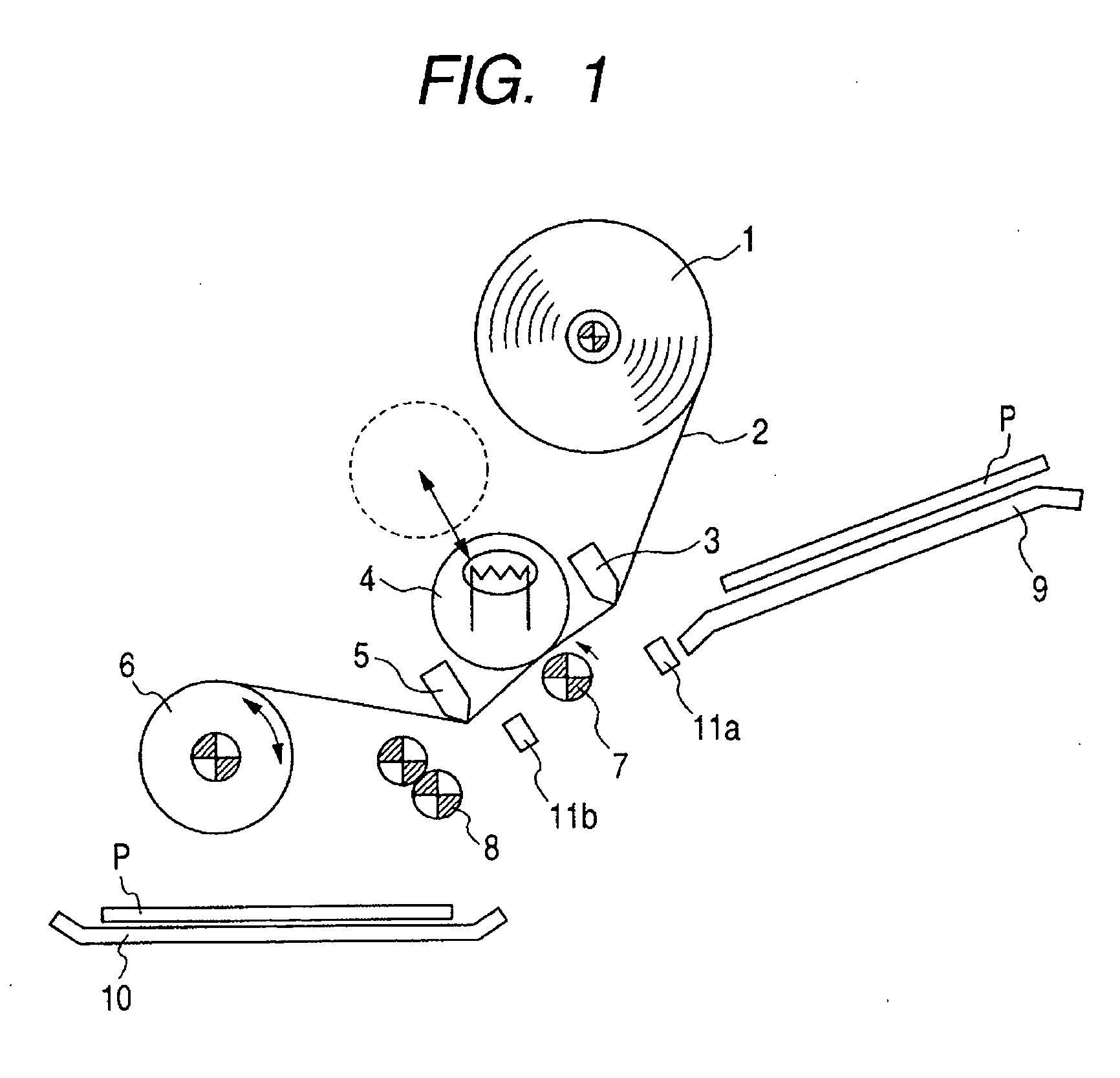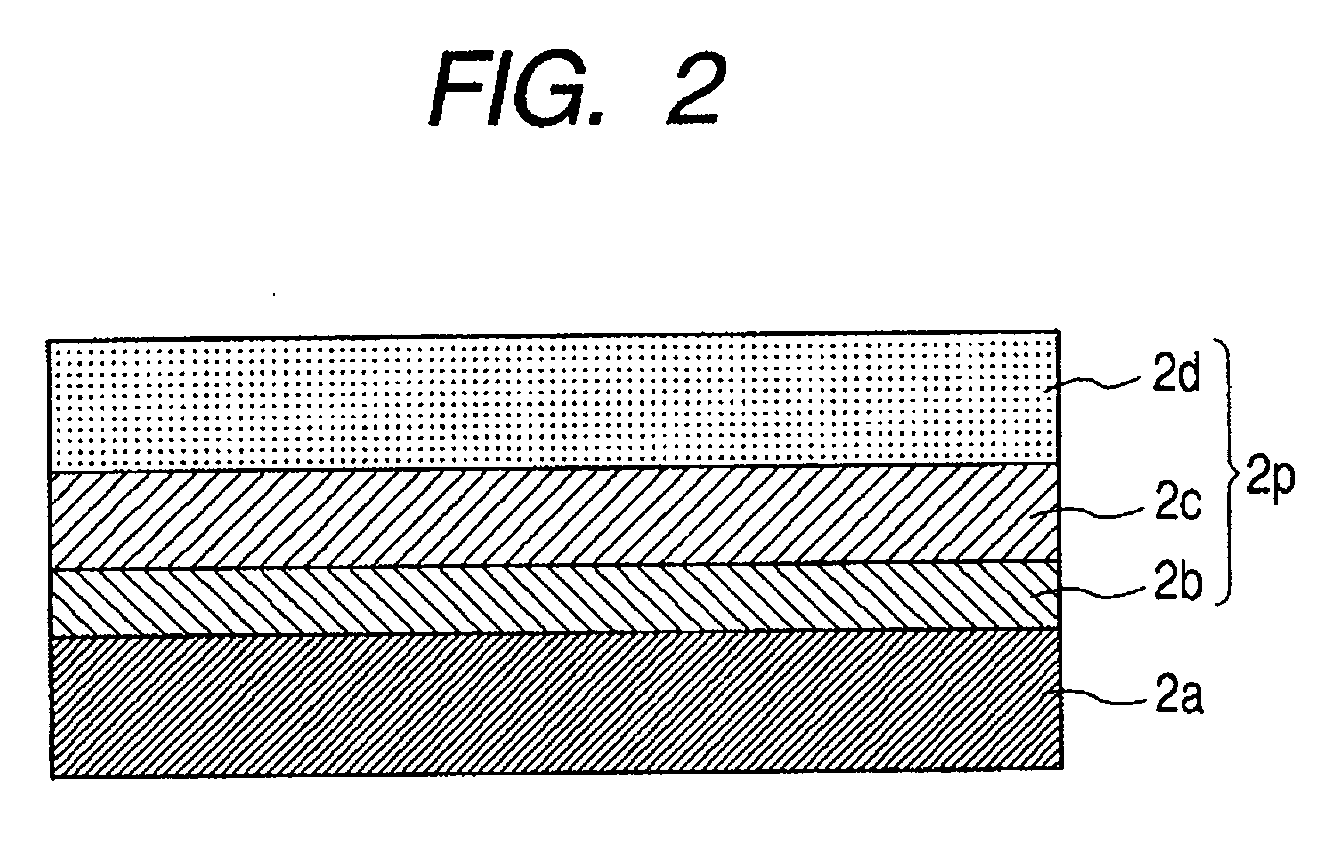Laminate film and image protection method using the same
a technology of laminate film and image protection method, which is applied in the field of laminate film, can solve the problems of difficult to prevent image deterioration, uv resistance, gas resistance and water resistance of images, and achieve the effect of suppressing fading and being handled with ease for us
- Summary
- Abstract
- Description
- Claims
- Application Information
AI Technical Summary
Benefits of technology
Problems solved by technology
Method used
Image
Examples
example 1
[0075] Firstly, the materials for forming a laminate film of this example were prepared in a manner as described below.
[0076] coating liquid 1: Acrylic Emulsion T371 (trade name, available from JSR Corporation, Tg=85° C., solid content: 40%) was used as coating liquid 1.
[0077] coating liquid 2: Acrylic resin DIANAL L-637 (trade name, available from Mitsubishi Rayon Co., Ltd., Tg=42° C., solid content: 40%) was used as coating liquid 2.
[0078] penetrative material 1: 40 parts of ethylene-vinyl acetate copolymer resin EVAFLEX (registered trademark) 220 (available from Dupont-Mitsui Polychemicals Co., Ltd., melting point: 65° C.) was added to 100 parts (solid matter weight) of polyethylene wax SLIPAID SL31 (trade name, available from Elementis Japan KK, melting point: 105° C.) and the mixture was melted by heating. When the viscosity was observed by means of Viscometer LVT (trade name, available from Brookfield Co.), it was found that the molten viscosity was 800 mPa·sec at 100° C.
[...
example 2
[0081] Laminate Film 2 was obtained in this example as in Example 1 except the coating liquid 2 was applied and dried to form an intermediate layer with a dry weight of 1 g / m2.
example 3
[0082] Laminate Film 3 was obtained in this example as in Example 1 except the coating liquid 2 was applied and dried to form an intermediate layer with a dry weight of 3 g / m2.
PUM
| Property | Measurement | Unit |
|---|---|---|
| glass transition temperature | aaaaa | aaaaa |
| depth | aaaaa | aaaaa |
| temperature | aaaaa | aaaaa |
Abstract
Description
Claims
Application Information
 Login to View More
Login to View More - R&D
- Intellectual Property
- Life Sciences
- Materials
- Tech Scout
- Unparalleled Data Quality
- Higher Quality Content
- 60% Fewer Hallucinations
Browse by: Latest US Patents, China's latest patents, Technical Efficacy Thesaurus, Application Domain, Technology Topic, Popular Technical Reports.
© 2025 PatSnap. All rights reserved.Legal|Privacy policy|Modern Slavery Act Transparency Statement|Sitemap|About US| Contact US: help@patsnap.com



